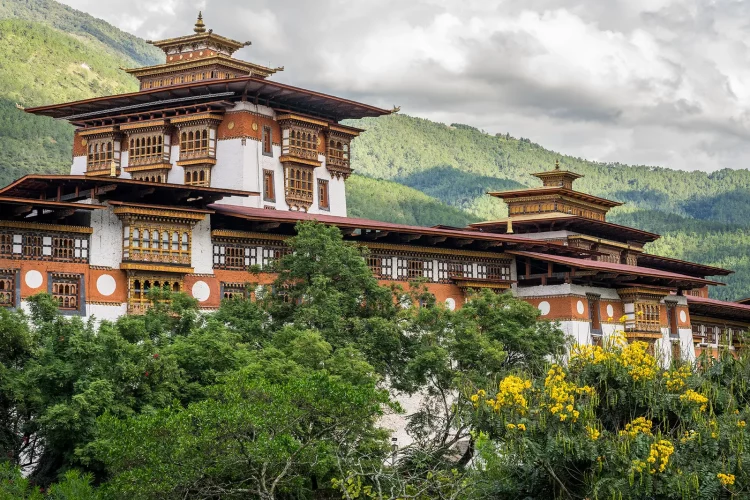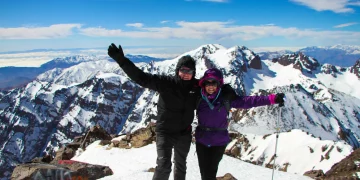“High Value, Low Impact” Model Revisited After Backlash
Bhutan, long hailed as a global pioneer of mindful travel, is once again making headlines in 2025 for revising its tourism tax policy. After reintroducing the Sustainable Development Fee (SDF) at $200 per person, per night in 2022—a significant jump from its pre-pandemic format—the country has faced mounting backlash both internationally and at home. Now, Bhutan is revisiting its famed “High Value, Low Impact” tourism model, attempting to walk a delicate line between preserving cultural identity and opening its doors more inclusively.
For years, Bhutan’s tourism philosophy stood out. Rather than chasing tourist volume like its Himalayan neighbors, the country prioritized ecological preservation, cultural integrity, and well-managed growth. The original SDF—introduced in the 1990s—required visitors to pay a flat fee that bundled accommodation, meals, transportation, and guides. It was a bold experiment in intentional tourism, and for decades it worked. Tourists came in smaller numbers but stayed longer, interacted more deeply, and left behind not just money but also a lighter environmental footprint.
However, the pandemic paused tourism entirely. When Bhutan reopened in late 2022, the government overhauled the structure: the new SDF was unbundled, and tourists were required to pay $200 per night on top of all expenses. The goal, according to officials, was to modernize infrastructure and invest in national development while keeping mass tourism at bay. The response was swift and polarized. Some applauded Bhutan’s continued commitment to sustainability, while others—especially independent travelers and regional visitors—deemed it elitist and exclusionary.
By early 2024, it became clear that the new policy was hurting local operators more than helping national coffers. Small guesthouses, community guides, and home-based artisans saw bookings drop significantly. Even well-off travelers who could afford the new fees questioned whether their money was truly benefiting the people they encountered. The romance of Bhutan was being overshadowed by paperwork, policy confusion, and price tags that often felt like barriers rather than bridges.

In response, Bhutan’s Tourism Council began hosting public forums and listening sessions throughout 2024. The feedback was loud and clear: the policy needed more flexibility, more transparency, and more local involvement. And so, in 2025, the government is adjusting course once again—this time with a more inclusive and tiered approach that reflects both the spirit of Bhutanese hospitality and the realities of a globalized world.
Locals Push for Cultural Immersion Over Wealthy Exclusivity
Perhaps the most powerful voices in Bhutan’s tourism reset have come not from foreign tour operators or international NGOs, but from Bhutanese citizens themselves. Guides, hoteliers, chefs, craftspeople, and village elders have pushed back against the idea that exclusivity is the only path to preservation. They argue that true cultural respect comes from meaningful exchange—not price tags.
As part of the 2025 policy shift, the SDF is now being restructured into a three-tier system. Standard travelers will still pay a nightly fee, but reduced rates are now available for those who engage in longer stays, volunteer projects, or cultural exchange programs. For example, travelers who spend a week living with a host family in Paro or Thimphu, attending language lessons and helping in local schools, will pay significantly less. This model not only makes Bhutan more accessible to diverse visitors but also centers the kind of immersive experiences that locals value.
Moreover, the government is now reinvesting part of the SDF directly into regional tourism funds, allowing smaller villages and less-visited dzongkhags (districts) to develop their own tourism plans. From eco-homestays in Lhuntse to textile workshops in Trashigang, Bhutan is inviting travelers into the heart of its cultural fabric—not just its postcard temples. This shift is a conscious departure from the image of Bhutan as a boutique destination for the wealthy and instead leans into a vision of shared growth and mutual respect.
Local tour operators have also been granted more agency. Rather than relying solely on high-end international agencies, Bhutanese companies are now licensed to offer customizable, budget-conscious itineraries that still comply with national goals. This gives travelers more freedom, and locals more control. The focus is no longer on luxury hotels and premium packages, but on storytelling, hospitality, and connection.
The guiding philosophy remains “High Value, Low Impact,” but what’s changing is how value is defined. It’s no longer synonymous with wealth or exclusivity—it’s being reimagined as depth, intention, and reciprocity. And that redefinition is opening Bhutan to a wider, more thoughtful generation of travelers.
Important for Readers Who Care How Money Affects Access and Meaning
For Roamcox readers who think deeply about how their travels intersect with ethics, equity, and sustainability, Bhutan’s 2025 tourism reset is a case study in complexity. It forces the question: who gets to experience a culture, and at what cost? What does it mean to protect a place—not just physically, but spiritually—and can that be done without gatekeeping?
Money is never just a number in tourism. It determines access, shapes perception, and influences the power dynamics between guest and host. Bhutan’s revised SDF model attempts to redistribute that influence more fairly—making room for travelers who bring time and curiosity instead of just capital. The introduction of tiered pricing, community engagement discounts, and local reinvestment mechanisms marks a significant move toward responsible tourism with actual social benefit.
Travelers now have clearer choices: they can pay a premium for short, high-end trips, or they can stay longer, go deeper, and pay less. The tradeoff isn’t in comfort—it’s in commitment. Those willing to step beyond luxury and engage more meaningfully will find the doors to Bhutan not only open, but welcoming.
And what do they find once inside? They find a country still rich with forests, monasteries, and unspoiled valleys. But more than that, they find people who want to talk, share meals, and swap stories. Monks who invite questions during evening chants. Farmers who share roasted maize beside rice paddies. Teenagers eager to practice English in the shadow of ancient dzongs.
The meaning of travel in Bhutan is not found in how much you spend, but in how present you are. And that’s the message Bhutan hopes to share with the world in 2025—not as a curated image of Himalayan mystique, but as a living, evolving nation eager to balance tradition with transformation.
For travelers who value impact over itinerary and meaning over luxury, Bhutan’s evolving tourism policy is more than a bureaucratic change. It’s an invitation to reconsider what travel should look like in a world that’s no longer interested in consumption, but in connection.





















